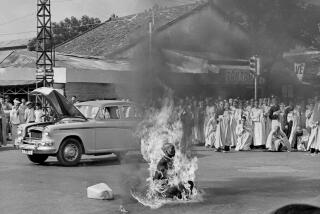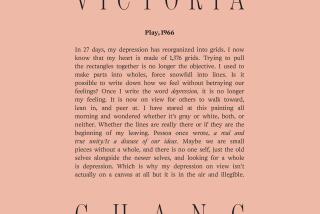Woolf’s Mental Illness: Obstacle or Enabler in Her Art?
VIRGINIA WOOLF
Becoming a Writer
By Katherine Dalsimer
Yale University Press
206 Pages, $24.95
The writer Virginia Woolf was obsessed by her mother, who died unexpectedly when Virginia was just 13. This loss, combined with the subsequent deaths of her half-sister, her father and her brother, haunted the fledgling writer, who ultimately forged out of these “sledge-hammer blows,” as she called them, the literary art of her impressive oeuvre. In “Virginia Woolf: Becoming a Writer,” psychologist Katherine Dalsimer examines the impact that these calamitous knocks had on Woolf, offering readers a fascinating, psychoanalytically informed look into how Virginia Woolf became the particular writer she was.
Dalsimer pieces together a crisp, if pain-filled, portrait of a young woman trying to make her way in what seemed an increasingly hostile world, a woman who used literary art as her only shield against profound loss. Most compelling, she considers a question Woolf herself weighed and to which neither Woolf nor Dalsimer can offer a clear-cut answer: Was Virginia Woolf’s mental illness “a terrible, wasteful obstacle to her creativity--or the necessary condition for it?” (Woolf suffered acutely from manic depression, ultimately committing suicide in 1941, at the age of 59, by walking with stones in her pockets into the River Ouse near her Sussex, England, home.)
In this engaging work of psychobiography, Dalsimer weaves back and forth among Woolf’s early journals, written when she was 15, 17 and 21, interposing those thoughts with Woolf’s letters, book reviews and essays (including “On Being Ill,” in which Woolf considers her mental illness), as well as her novels, principally “To the Lighthouse,” “The Voyage Out,” “Mrs. Dalloway” and “Jacob’s Room.” Familiarity with Woolf’s books, while helpful, is not necessary to enter this narrative.
As a teacher and supervisor for psychologists and psychiatrists in training, Dalsimer has found that close reading of literary texts is excellent “ear training” for the kind of listening required in clinical situations. “It opens to the attentive listener a complex counterpoint between the patient’s narrative, both verbal and nonverbal, and the therapist’s own emotional responses.” It is also, one might note, an excellent training for apprentice writers and for readers who wish to delve deeply into texts. In what could be viewed as a fine introduction to the art of close reading, Dalsimer takes readers by the hand and shows us the treasures she finds. In “To the Lighthouse,” for example, there’s the similarity between Mrs. Ramsay and Woolf’s idealized mother; the closeness between Lily’s relationship with her painting and Woolf’s connection with her writing; and the bone-gripping experience of loss that caps the narrative.
“From an early age,” Dalsimer explains, “writing was as necessary to her as the very air she breathed: before finishing one book she began to envisage the next, to ensure that there would be no time when she was not working. It was the writing that consoled and sustained her--as much as it was possible for her to be consoled or sustained.”
Particularly disturbing are Woolf’s references, found in many of her works, to being drowned, blissfully sinking below the surface. As a 21-year-old, for example, Woolf took a newspaper mention about a woman who committed suicide by drowning and wrote a provoking, highly subjective essay taking on the thoughts of the drowned woman. “In conjuring up the woman’s sense of aban- donment,” Dalsimer points out, “... Woolf has lost whatever distance remained between herself and her subject. She has slipped into the first person and into the present tense.”
Knowing how Woolf’s life would end, these references chill.
“What a born melancholiac I am!” Woolf is quoted in a diary entry. “The only way I keep afloat is by working.... Directly I stop working I feel that I am sinking down, down. And as usual, I feel that if I sink further I shall reach the truth.”
More to Read
Sign up for our Book Club newsletter
Get the latest news, events and more from the Los Angeles Times Book Club, and help us get L.A. reading and talking.
You may occasionally receive promotional content from the Los Angeles Times.






